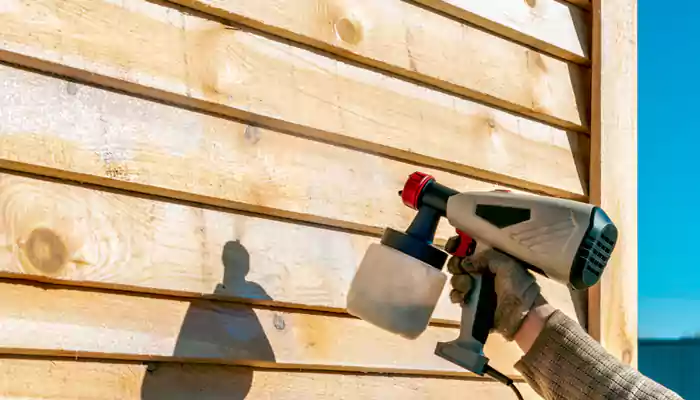Termite Control – How To Get Rid Of Termites Effectively
Termites, often referred to as the "silent destroyers," can cause extensive damage to your home or property if left unchecked.
- Ishani Karmakar
- 13 October, 2023
- 2 mins ago

Termite Control – How To Get Rid Of Termites Effectively
Termites, often referred to as the "silent destroyers," can cause extensive damage to your home or property if left unchecked.
These wood-eating insects cost homeowners billions of dollars in damages every year. Whether you're currently dealing with an infestation or just want to prevent one, this article will provide you with a comprehensive guide to effectively control and eliminate termites.
Understanding the Enemy – Types of Termites
Before diving into control methods, it's crucial to identify the type of termite you're dealing with. There are three primary types:
Subterranean Termites: These are the most common and destructive. They live in the soil and enter structures from the ground up.
Drywood Termites: They live within the wood they consume and often infest attic spaces or wooden furniture.
Dampwood Termites: Prefer moist wood or wood in contact with the soil. They are less common in homes.
Step 1: Inspection and Identification
The first step in termite control is a thorough inspection. Look for signs such as:
Mud tubes on walls or foundations.
Hollow-sounding wood when tapped.
Discarded wings near windows or doors.
Frass (termite droppings).
Step 2: Reduce Moisture
Termites thrive in moist environments. To make your home less inviting:
Repair leaky faucets and pipes.
Ensure proper drainage around your home's foundation.
Keep gutters and downspouts clean.
Step 3: Create a Barrier
This is especially crucial for subterranean termites. Methods include:
Physical Barriers: Install metal or crushed stone barriers around your home's foundation.
Chemical Barriers: Use termiticides to treat the soil around your home.
Step 4: Use Termite Baits
Termite baits are an eco-friendly option that can be used alone or in conjunction with other methods:
Baits are placed in the ground around your property.
Termites consume it and carry it back to the colony, poisoning others.
Step 5: Direct Wood Treatments

For drywood termites, treating the infested wood directly can be effective:
Apply termiticides to affected areas.
For severe infestations, consider fumigation.
Step 6: Monitor and Maintain
After treatment, regularly check for signs of a re-infestation:
Schedule annual professional inspections.
Step 7: Seek Professional Help
While DIY methods can be effective, some infestations require professional expertise:
Exterminators have access to more potent treatments.
They can ensure that the entire colony is eradicated.
Natural Remedies for Termite Control
If you prefer a more natural approach, consider the following:
Diatomaceous Earth: This is a natural insect killer and can be sprinkled around your home's foundation.
Beneficial Nematodes: These are microscopic worms that invade and kill termite larvae.
Orange Oil: Contains an active compound that's toxic to termites, especially effective for drywood termites.
Prevention is Key
While treating an existing infestation is crucial, prevention is the best form of control:
Store firewood away from your home.
Use termite-resistant wood in home construction.
Seal gaps and cracks in your home's foundation.
Termite control requires a multi-faceted approach. Over time, their clandestine activities can compromise the structural integrity of a house, weakening foundations, walls, and wooden beams. Similarly, wooden furniture falls prey to their insatiable appetite, leading to hollowed-out structures and significant monetary losses. The damage is often exacerbated by the fact that their activities remain unnoticed until severe harm has been inflicted, emphasizing the importance of early detection and prevention. Whether you're battling an active infestation or aiming to prevent one, understanding the enemy and employing a combination of methods will give you the upper hand. Remember, the cost of prevention or early intervention is often much less than the expense of repairing termite damage. Stay vigilant and proactive to protect your home from these silent destroyers.








